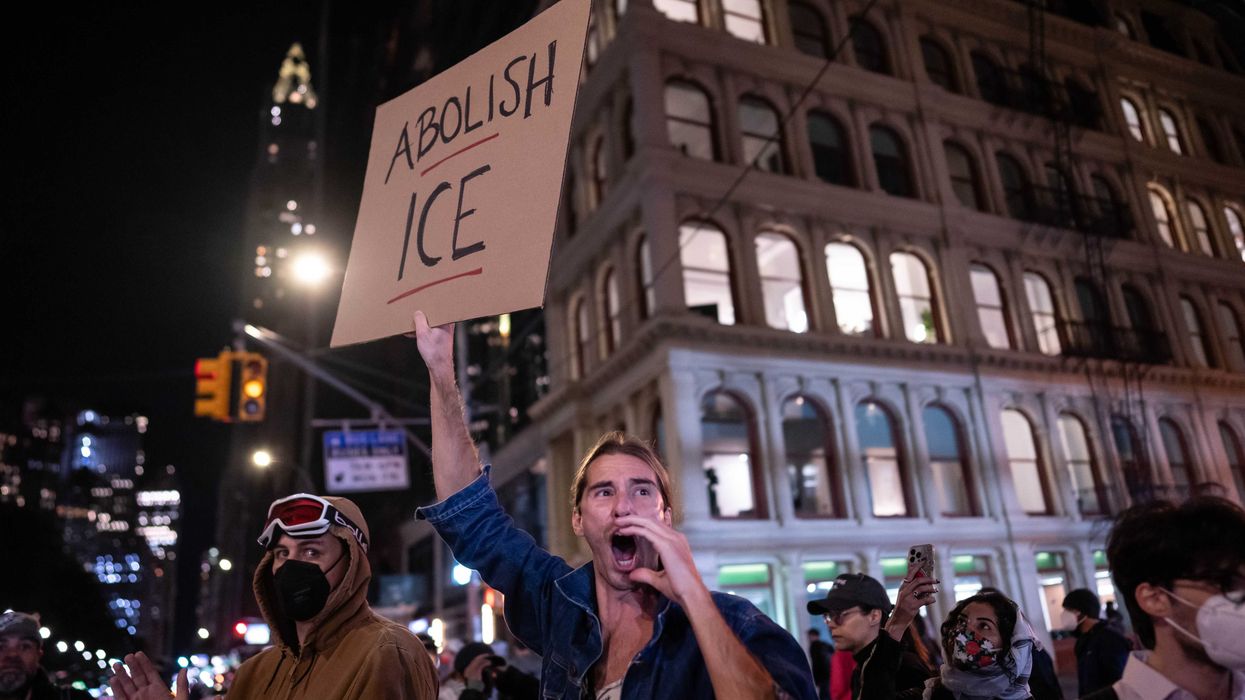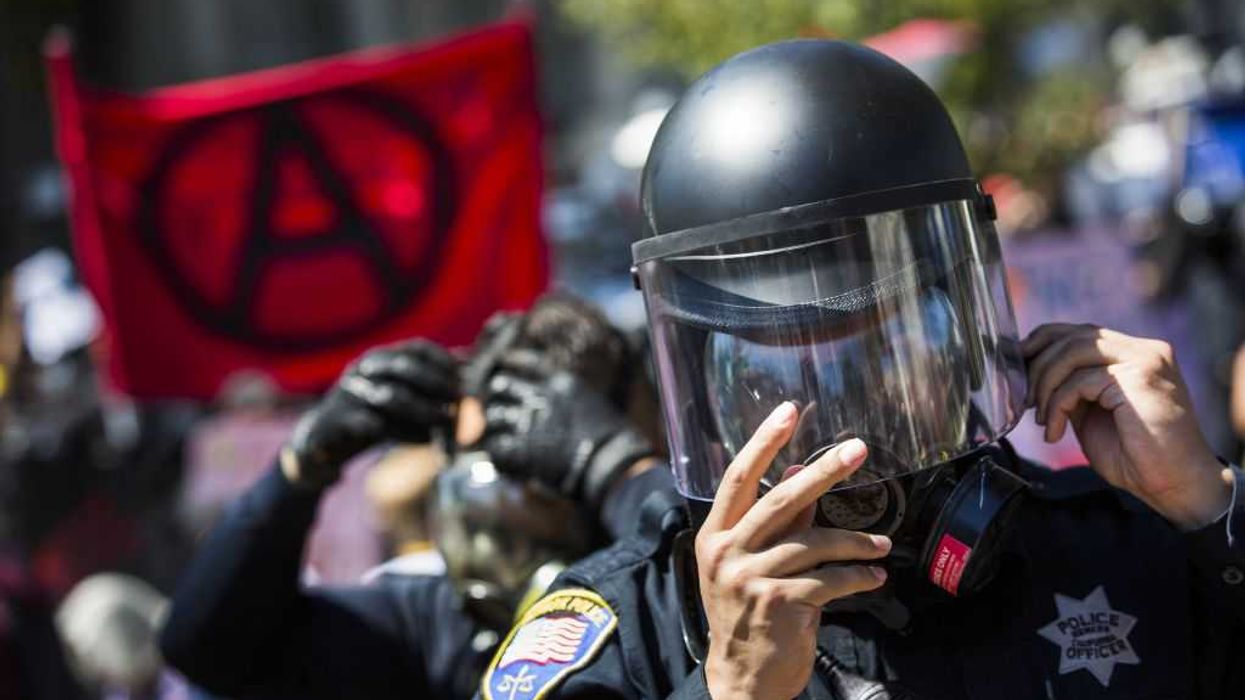GLENN: We welcome to the program, Joe Bastardi. He's from WeatherBELL.com. If you don't know Joe, he's been on with us several times over, you know, the last -- seems like couple of decades. Maybe three decades, Joe.
But Joe is one of the best weather guys out there, meteorologists. He is -- when it comes to hurricanes, this guy nails it. He has said recently that the -- the drought of hurricanes, if you will, these giant storms, this is the year they're going to come to an end. He is also -- his tracking of this hurricane was almost 100 percent correct, or close enough for people in my business at least.
And unfortunately, he is also calling for another hurricane that is now starting to form as a tropical storm. And he's here to tell us a little bit about that.
But first, Joe, welcome to the program. How are you, sir?
JOE: Well, I'm pretty good. I just want to call in for a couple reasons on Irma, okay? It's not a done deal that's hitting the United States.
GLENN: Sure.
JOE: It's Puerto Rico and the Virgin Islands I'm very, very worried about. In fact, in looking at what I'm seeing, it has a classic look for a hurricane that should go to a major hurricane. But we look at these analogues of past patterns. For instance, Ike and Andrew. Where the path -- you see the path come up and bend. And when it bends off to the left like that, the hurricane starts intensifying. Because it means that the upper air ridge of high pressure to the north of it is backing west with it, to sort of escort it westward like that.
By the way, and I just want folks to understand, I learned that methodology in 1976 at Penn State University from Dr. John Lee, my tropical professor, who would point out countless storms, countless major storms. Because we did have major hurricanes back then. In fact, quite a few of them in the '30s, '40s, and '50, that when they came up and bent to the left, there would be rapid intensification that would follow over the next few days.
And so what we're dealing with here is a storm that has plenty of time over warm water that appears to me is heading for the Virgin Islands and Puerto Rico. This is very important. It's going to move slow. If we get a good handle on this by Sunday, if it's me and I'm the administration, I would start looking at this as to try to preemptively airlift supplies and get people ready. Because it may not come until Wednesday or Thursday, but if you're coming in Saturday or Sunday, even if it's a near-miss, it's a bad storm. If it's a direct hit, where the Category 4 or 5 hurricane coming through the Virgin Islands to Puerto Rico, look what you go did, right?
And we just saw a tremendous response in Texas, a reactive response which was great. A proactive situation, especially with Puerto Rico and the Virgin Islands. Both US territories. We have to understand that. Would really be a way that -- you can show how good government can work with the right -- with the right preparation.
GLENN: Joe, what are the odds that that -- that comes a little farther up north.
JOE: What do you mean?
GLENN: And hits -- you know, it -- it slams into -- it misses Puerto Rico, the Virgin Islands, and it slams into the Carolinas. I guess it's not really north.
JOE: That's certainly in the realm of possibility. But what I do is I make a forecast. I think what this is going to do --
GLENN: Okay.
JOE: -- is come very close to Puerto Rico, just north of Hispaniola. And because -- I've got, you know, clients all in there.
GLENN: Yeah.
JOE: And, you know, we're getting the Bahamas sort of war footing. Getting them prepared. And then you have the southeast United States.
If this thing takes a further cell track over Puerto Rica and Hispaniola, it will not be able to rebuild major intensity before Florida.
GLENN: Okay.
JOE: If you look at the tracks of storms into Hispaniola, what happens is this, if there are major hurricanes and they're hit, the inside of them get hallowed out. And they can't get their core back together for two, three, four days.
You saw that with Ike. When Ike hit in there, it had to get back over the gulf for a while. So you have to understand that there is a way out here for the United States, or it recurves to the east of the United States.
But what we do is, look, we tell people options. And we say, this is our most likely forecast. And right now, the first place I'm worried about and the reason I called in was because Puerto Rico and the Virgin Islands and the idea that, you know, if you're seeing something four or five days in advance, you would be able to get ready for it.
What happened with Harvey was, everybody was staring at the eclipse on Monday. I mean, I was amazed at the lack of attention to what was going on. It wasn't named. But it was -- and, you know, we were warning our clients saying, "You know, this is going to be a big deal." And we warned them -- that's not hind-sighting. It's what we were doing.
And as far as the preseason goes, I tell you, I put something on Twitter this morning that showed the pressure patterns when major hurricanes are going to hit the United States and the computer models. And what has happened over the last 12 years -- and it might be due to the fact that the globe is warmer. Okay?
Might argue over what causes that, but I don't argue that the globe is a bit warmer. Is it distorts the barometric pressure patterns during the hurricane season, which may make it less likely for hurricanes to hit. Now, what do we jump on this year? We knew this year would be different. Look at how cool it is across the eastern and central United States.
And when it's cool in the month of August and the ocean -- and you're in a warm cycle in the Atlantic Multidecadal Oscillation, we are. Okay? Bang. It lights up the tropics. You saw that happen in 2004.
GLENN: Okay. So, Joe, you just brought up global warming. And all of Al Gore's nonsense of, you know, the world is going to all be underwater, you know, by 2016. And he talked about these great buildup of storms. We have just gone through an amazing quiet period of storms. And I would like to get your view. I don't know where you stand on global warming.
I am on record saying, I will look at the temperatures. And if the temperatures are up. That's great.
What you do about it, is what we need to actually be discussing. But for the people to start coming in and saying, "These storms are global warming. See, we told you." No, this is a cycle that has been quiet for a while and might come roaring to life.
JOE: Well, here's the thing, you know, I believe, first of all in Ecclesiastes 1:9: There's nothing new under the sun. You know, as man gets smarter, he observes things more and more.
The cycles in the ocean, what we call the meridional overturning circulation, centuries in the making. The way you see the oceans now is a product of back and forth for such a long time.
GLENN: Yeah.
JOE: So I believe that the cycle is largely warming. CO2's contribution is minute. It's only .04 percent of the atmosphere.
But, look, here's what starts happening: Let's say this becomes a big hurricane, but it stays out at sea. Well, that's weather. If it happens to come 100 miles further west and hits the United States, well, there's climate change right there. And that's what you see going on.
You take -- see, this is the thing about me -- I should probably be like a spy for the other side. I can give them examples where they could push their point. For instance, suppose this comes into the Bahamas as a major hurricane. That will be three major hurricanes in three years, right? Which is almost unprecedented in the Bahamas. Three major hurricanes in three years. My counter, then, to myself would be: Well, look at what happened '63, '64, '65, '66, around there, where you had major hurricanes. You had Anez (phonetic), Cleo, Betsy, Flora, all coming into the same spot.
And where was that? And that's the big thing. Why -- today is the anniversary of Hurricane Carol, folks, on the northeast coast. 1954. The wind gusted to 135 miles an hour at Block Island, Rhode Island. That happens to be stronger than the wind gusts at Aransas Pass with this past storm, which was 132 miles an hour. Now, one could argue, well, there were stronger winds with Harvey. But then again, with Carol, there may have been stronger winds too because they push 15 feet of water into Providence, Rhode Island.
GLENN: So, Joe --
JOE: So my point is this: That you are seeing an agenda. And they come out after the fact. It's Monday morning quarterbacking, and that's what I get all upset about. That, oh, these people didn't even know what was going on to happen in the preseason. They didn't get out there and hang their tail out to dry, like we did at our company. And then they tell me after the fact? That, oh, this is because of CO2.
GLENN: So, Joe, I have to ask you this question. And I know you have to run. You're a very busy man. And I appreciate your time.
JOE: Not really. I can hang out.
(laughter)
GLENN: I want to ask you this one question: And that is this. I have such respect for you because you really know your science. You know your craft. You know it.
But I'm listening to you, and I'm hearing the memorization of the dates and the storms and everything else. Did you -- like a lot of kids grew up, they memorized the names of the presidents. Did you grow up knowing you wanted to do this and memorizing the names of storms? When did you decide, my gosh, I'm passionate about this?
JOE: Well, at the age of three, my mom and dad had to keep an eye on me because I would lie on my back and stare at the sun and the cumulus clouds going in front of the sun because I would like to look at the outline of the clouds. My dad is a meteorologist. He's 88 now. He graduated out of A&M in '65, and he put me to bed, not with the three little bears, but the three big storms of '54. Carol --
(laughter)
JOE: No, listen, I've been through it. My son's like this. My great grandfather was a town weatherman in Bisignano, which is a town in Sicily. And it's in the blood. And it's in the passion.
You know what, we're probably a lot alike in our spiritual beliefs. God -- God gives you something, a passion like that, he's doing it for a reason.
GLENN: Yeah, he is.
JOE: Many people -- you know, I see the majesty, I see the majesty of the creation of God's hand in the weather every day. I simply marvel at it. I'm looking at it right now out my window. There's a cloud in one place. No cloud in the other. There has to be something different going on over that short period, that short area. How does that happen?
So you got to understand something, that this is all I've ever wanted to do since I was a little kid. I've been a geek all my life. I'm still a geek now. I can't help it.
And I'll tell you what's bad, it's a blessing and a curse, folks. Because you will see things quite far away, and then you can't sleep because you keep going over it. You keep looking at maps. Looking at maps.
And then what happens when they don't happen? You learn about being wrong, okay? And that's the problem I think that climatologists have: They should be made to forecast the weather for a year so they can see how the models go wrong and how they can be wrong. Because when you're just looking at stuff from behind and you get to come out and say, "Well, see, it's what we told you," it's a very, very different situation from being an operational forecaster, where your life is on the line.
GLENN: Joe Bastardi from WeatherBELL.com. WeatherBELL.com. Chief meteorologist, and really one of the most accurate guys when it comes to long-range forecasting and a friend of the program for a very long time. Joe, I appreciate it. God bless.
JOE: Hey, before I go, just remember, calm down. Everyone enjoy the weather. Because it's the only weather you've got. Most of the weather is nice across most of the world. Okay?
STU: Optimistic take.
GLENN: God bless you. Thanks, Joe. Yeah.

 Adam Gray / Stringer | Getty Images
Adam Gray / Stringer | Getty Images
 Anadolu / Contributor | Getty Images
Anadolu / Contributor | Getty Images Brandon Bell / Staff | Getty Images
Brandon Bell / Staff | Getty Images Europa Press News / Contributor | Getty Images
Europa Press News / Contributor | Getty Images